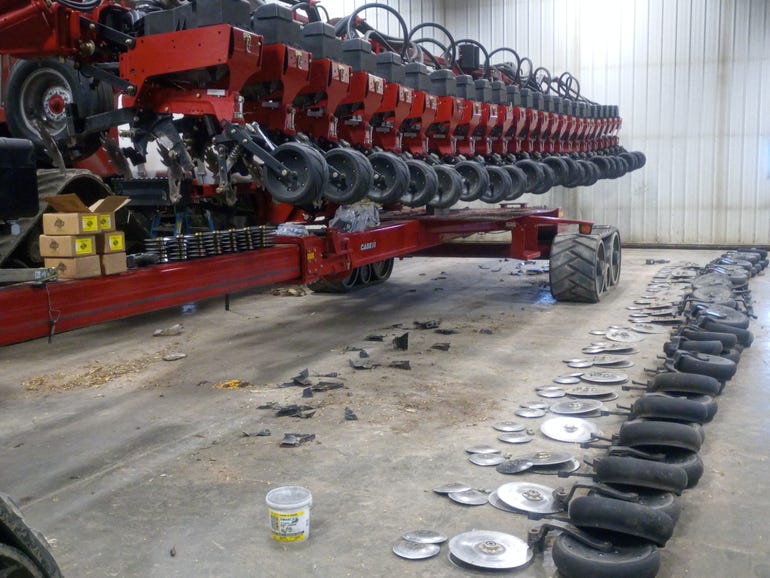January 31, 2020

A couple of weeks ago we pulled the 20-in. row planter into the shop in order to figure out how we would outfit it with dry fertilizer.
Over the course of the next few days we spent time looking at it and talking about our options. At one point, I thought we would have to abandon this project all together. Modern planters just are not designed with dry fertilizer in mind.
We didn’t want to change the planter structure. When we want to sell this machine in the future, we want to be able to put it back to original. We researched all the different options we could find for fertilizer boxes. We checked dimensions and did a lot of measuring. We discussed removing the bulk seed boxes (and going back to individual hoppers). We also looked at going to a different bulk seed box that could feed all the rows from one box.

A lightbulb goes off
We went through a multitude of alternatives before a lightbulb went off. We saw that if we turned the bulk seed boxes 90 degrees, we would have enough room between them for a fertilizer box. This option would only require some additional frame to be bolted in.
Currently we are five weeks away from having our custom fertilizer box from Lynx. We are finalizing plans on the best way to apply the fertilizer to the row. Again, that isn’t turning out to be as easy as we had hoped, but we have a couple of viable options to evaluate. We should have that figured out well before the planter comes back in the shop for final assembly.
Since the planter was in the shop, we decided to go ahead and do annual inspection and maintenance. I went online and downloaded an inspection checklist for the planter and went down it line by line. Corky disassembled the planter (see photo) while we waited for parts, then we all put it back together.
We took a little more care than normal this time. Sometimes I think we get in a rush and just slap it back together without getting some of the tolerances, like blade spacing and gauge wheel shims, correct.
We quickly surpassed $200 per row in repairs. We changed the opening discs, firming points, seed boot, and closing discs. We believe that is all that needs to be done. So far we have been able to do all this work with the planter in the folded position. We will unfold the planter and check the driveline bearings before we take it out of the shop.
We all know planting is the foundation for the entire crop potential. If we don’t get this part right, what benefit will we get from the rest of the work we do for the crop?
The opinions of the author are not necessarily those of Farm Futures or Farm Progress.
About the Author(s)
You May Also Like






